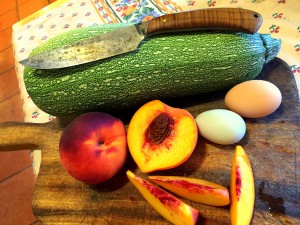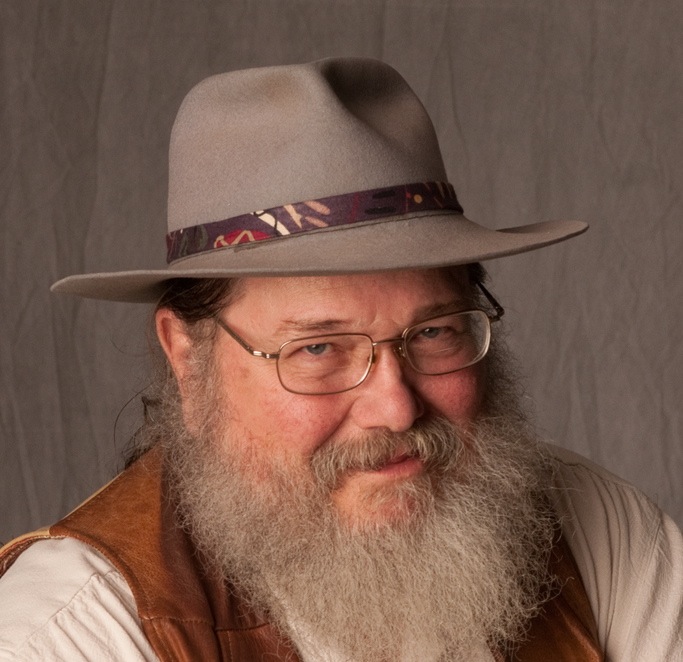 Stark white cumulonimbus clouds collide over the San Francisco Peaks and pile up like pins in the bowling alley. The crack of the lightning strike turns my head. For a moment the silver wire burns against the sky and then it dances behind my closed eyelids. The thunder rolls from beneath my feet and the black cinder hills toss it back to the towering pines. Like a logjam at spring flood the year’s accumulation of emotional debris vibrates and shudders in my chest in response to the pounding of the thunder and I feel purged; I breathe just a little deeper of the rising dust and sage and rain. I can’t recall the origins of this visceral response of redemption, but I suspect that when I moved to the Southwest and had to wait on the monsoons for the garden to survive that I began to invest the event with other significant properties.
Stark white cumulonimbus clouds collide over the San Francisco Peaks and pile up like pins in the bowling alley. The crack of the lightning strike turns my head. For a moment the silver wire burns against the sky and then it dances behind my closed eyelids. The thunder rolls from beneath my feet and the black cinder hills toss it back to the towering pines. Like a logjam at spring flood the year’s accumulation of emotional debris vibrates and shudders in my chest in response to the pounding of the thunder and I feel purged; I breathe just a little deeper of the rising dust and sage and rain. I can’t recall the origins of this visceral response of redemption, but I suspect that when I moved to the Southwest and had to wait on the monsoons for the garden to survive that I began to invest the event with other significant properties.
I have seen many an August arrive to find the weeds were toasted almond brown and the grass rustled like so much shredded newsprint. Today I survey glorious emerald weed beds studded with sunflowers and rank stands of grass that invite a nap.
It’s a lush late summer. Sue will tell you I am obsessed with the feral rye that occupies the bar ditches and vacant fields around Doney Park. She mutters under her breath about invasive species. When agriculture ceased here in the 1950s the rye was grown for flour, making whisky and as a cover crop. In those days a herd of antelope still grazed out into the park and a big snowdrift on the North side of Old Caves Crater fed a little tributary of the Rio de Flag. Uniquely adapted to this micro-climate, it re-seeded itself and thrived in the dusty dark cinders of the park for 60-plus years with no encouragement, producing big golden bearded heads heavy with steel gray grain.
In a recent letter from my eldest brother Homer, he reminded me of our family’s ongoing efforts to produce food when I was a child.
11 August
I think Henry [Henry Norris, our father] finally had a good garden going at Anetta, but he had already tried to farm in several locations. The first I remember is in metropolitan Aledo on FR 1187. Bob Ball plowed a garden spot for us in the clay and caliche beside our house. In that little plot there were a lot of grass clumps that were not disturbed by the plow, which was pulled by a mule. Nothing new grew there but the weeds were healthier then. He got a sow that had six piglets, but she rolled over on them and killed all. We got a hen that hatched out a bunch of little chicks but one day a ground rattler killed her and the chicks in the yard.
Our finest feature was a new milk cow and Henry built a milking shed down across the patch. Local dogs shredded her tail and just hassled her constantly. Henry patched her tail by folding a strip of gasket paper and taping it in the hollow skin. She was already a nervous wreck and would escape up into the high prairie across the road. Henry would go up there in his c. 1933 Chevy and drive her home, bumping her occasionally to chastise her. I think she had a nervous breakdown. She stopped giving milk. Henry sold her back to one of the Wiley boys.
I guess I admire the resilience of the persistent rye plant. I know what it costs my wife to coax tomatoes, corn and beans from the dust of the old volcanoes. When we were kids we kept our eyes open and a walk in the woods often yielded a small harvest of native pecans, plums, mustang grapes, poke greens, mushrooms, lambs quarters or red haws. I can’t seem to break the habit. Each time I look at the rye I see an unclaimed bounty.
Sue has planted a small patch of White Sonoran wheat. This is the wheat the conquistadores carried with them and was the primary variety grown in the West and Southwest from the 1700s until the 1950s. It has had a long and loving relationship with this climate. I’ve been researching small scale harvesting equipment online. There are threshers and harvesters built on a scale that would make them an appropriate investment for a small group or co-op. I did see videos of weed trimmers with blades adapted with cradles for harvesting wheat or rye, which looked effective if not pleasant to operate. But what captured my poet’s heart was the video of the barefooted 14-year-old miss effortlessly wielding a scythe. She pirouettes and spins around a massive rusty tractor, marooned in tall grass, delicately swinging her scythe. It’s Swan Lake for peasants.
Almon Lewis, of Furnetts Creek, W. Va., was always my gold standard of scythe operation. He was tall and loose jointed at six-and-a-half feet. I never saw him dance but he was grace itself with that twisted snath in his hand. As best as I could tell he would just shift his weight from one foot to the other, put a slight rotation in his hips, and the long curved blade would swoop of its own volition and drop the new cut grass in a neat row. He hardly broke a sweat. He just ambled. If ever you have swung the curved blade you know that it ain’t easy.
My brother Sam in West Virginia has inoculated a pile of logs with Shiitake mushroom spawn and now he is posting pictures online of said logs covered with mushrooms. The harvest is truly bountiful.
Homer signs off:
Apparently you have become famous. My fame is limited to Parker County, Tx. Sam has his mushroom fame so we are all doing our “thang.” Keep calm and carry on …
Homer

